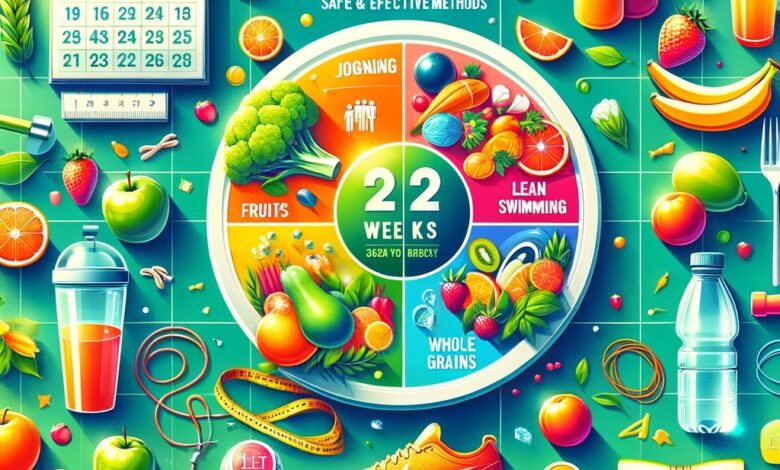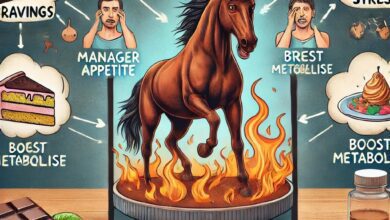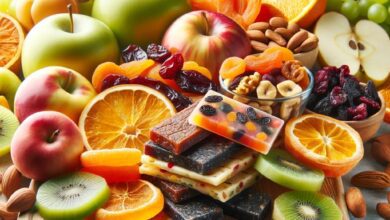How to Lose Weight Fast in 2 Weeks 10 kg: Safe & Effective Methods

Losing a significant amount of weight in a short period, like 10 kg in 2 weeks, is a challenge that requires a focused and well-structured approach. This guide will navigate through safe and effective methods to achieve this ambitious goal without compromising your health. The journey of rapid weight loss intertwines diet, exercise, and lifestyle changes, each of which plays a vital role in the success of your weight loss journey.
Understanding the dynamics of losing weight quickly yet safely is crucial. Rapid weight loss is often associated with fad diets and extreme exercise routines, which can be harmful. Instead, our focus will be on sustainable and healthy methods that not only help you lose weight quickly but also support your long-term health.
1. Introduction
Losing 10 kg in just two weeks is a lofty goal, but with the right strategy, it’s achievable. This ambitious target requires dedication, discipline, and a well-thought-out plan. The key to success lies in balancing a calorie-controlled diet with an effective exercise routine, ensuring that you burn more calories than you consume.
- Understanding Caloric Deficit: To lose weight, you need to create a calorie deficit, meaning you consume fewer calories than you burn.
- Combining Diet and Exercise: A balanced approach that combines dietary changes with physical activity increases the likelihood of success.
Creating a safe and effective weight loss plan involves understanding your body’s needs and responding accordingly. It’s not just about cutting calories; it’s about making healthier food choices and increasing physical activity in a way that is sustainable and beneficial in the long run.
1.1. Understanding Rapid Weight Loss
Rapid weight loss, especially as ambitious as losing 10 kg in two weeks, can seem daunting. Understanding the principles behind it is essential for a safe and effective journey. It involves a significant calorie deficit, but it’s crucial to achieve this without depriving your body of essential nutrients.
- Safe Caloric Reduction: Cutting calories too drastically can lead to health issues. It’s important to find a balance that allows for weight loss without nutrient deficiency.
- Short-term vs. Long-term: Rapid weight loss strategies differ from long-term weight management. The focus here is on quick results but with an eye on your overall health.
Remember, the goal is not just to lose weight but to do it healthily. This means prioritizing nutrient-rich foods and avoiding extreme measures that could harm your body.
1.2. Setting Realistic Goals
Setting realistic goals is a critical component of any weight loss journey, especially when you’re aiming to lose a significant amount in a short period. It’s important to understand that while losing 10 kg in two weeks is possible, it requires a high level of commitment and discipline.
- Personal Health Considerations: Consider your current health status and lifestyle before setting such a goal. It’s essential to consult with a healthcare professional to ensure it’s safe for you.
- Sustainable Practices: While the goal is ambitious, the methods used should be sustainable and healthy, focusing on long-term well-being rather than just short-term results.
1.3. The Importance of a Holistic Approach
A holistic approach to weight loss considers all aspects of your health and lifestyle. It’s not just about what you eat or how much you exercise, but also about your mental well-being, sleep quality, and stress management.
- Mental and Emotional Health: Stress and sleep have significant impacts on weight. Managing these effectively is crucial for successful weight loss.
- Lifestyle Changes: Incorporating healthy habits into your daily routine can help support your weight loss goals and improve overall well-being.
In conclusion, losing 10 kg in 2 weeks is a challenging yet achievable goal with the right approach. It requires a well-rounded plan that balances a healthy diet, effective exercise, and a focus on overall well-being. By setting realistic goals, understanding the principles of rapid weight loss, and adopting a holistic approach, you can embark on this journey safely and effectively.
2. Comprehensive Diet Plans for Quick Results
Losing 10 kg in just 2 weeks requires a meticulous approach to your diet, one that balances rapid results with safety and health. A comprehensive diet plan is not just about reducing food intake but involves a strategic selection of foods to optimize your body’s weight loss capabilities.
Why a Balanced Diet Matters:
- Nutrient-rich Foods: Essential for maintaining energy and health.
- Controlled Portions: Key to creating a calorie deficit without feeling starved.
- Diverse Food Choices: Helps in sustaining the diet plan without boredom.
Maintaining a balanced diet is crucial. It’s not just about eating less but eating right. A diet that includes a variety of fruits, vegetables, whole grains, and lean proteins ensures you’re receiving essential nutrients while cutting down on calories.
2.1. Creating a Balanced Diet for Rapid Weight Loss
A balanced diet is the cornerstone of any effective weight loss plan, especially when you’re looking to lose weight fast. It’s not just about cutting back on calories but ensuring your body gets the right kind of nutrients to stay healthy and energetic.
- Focus on High-Fiber Foods: These keep you fuller for longer, reducing the temptation to snack.
- Incorporate a Variety of Vegetables: Low in calories, and high in nutrients.
- Select Whole Grains over Processed Carbs: They provide sustainable energy and less sugar spike.
When crafting your diet plan, consider the following:
- Meal Timing: Eating at regular intervals helps in maintaining a steady metabolism.
- Portion Control: Essential to avoid overeating, even with healthy foods.
- Hydration: Often overlooked, water is crucial for weight loss and overall health.
2.2. Incorporating Lean Proteins into Your Diet
Protein is a key player in weight loss, particularly when you want to lose weight quickly. It’s not just about quantity but quality as well. Lean proteins are your best bet, providing the necessary nutrients without the extra calories from fat.
- Opt for Lean Meats and Fish: Chicken, turkey, and fish are great sources of high-quality protein.
- Include Plant-Based Proteins: Beans, lentils, and tofu can be excellent alternatives for vegetarians.
- Eggs: A versatile source of protein that can be included in many meals.
Incorporating lean proteins in your diet helps in:
- Building Muscle Mass: Essential for burning more calories, even at rest.
- Reducing Appetite: Protein-rich foods keep you full, reducing the chances of overeating.
- Boosting Metabolism: Protein has a higher thermic effect, meaning your body burns more calories digesting it.
2.3. Understanding Calorie Deficit for 10 kg Weight Loss
Achieving a calorie deficit is fundamental to losing weight. It means consuming fewer calories than your body burns in a day. For rapid weight loss, this deficit needs to be significant but safe.
- Calculate Your Basal Metabolic Rate (BMR): Understand how many calories your body needs at rest.
- Track Your Daily Caloric Intake: Keep a food diary or use an app.
- Be Mindful of Hidden Calories: Sauces, dressings, and snacks can add up.
Creating a calorie deficit involves:
- Being Aware of Caloric Values: Understanding the calorie content in foods helps in making informed choices.
- Regular Monitoring: Adjust your diet plan based on your progress and how your body responds.
- Balancing Macronutrients: Ensuring the right mix of proteins, carbs, and fats.
Remember, while creating a calorie deficit is crucial, it should not come at the cost of your nutritional needs. The goal is to lose weight healthily, not to starve yourself.
Conclusion
Embarking on a journey to lose weight fast in 2 weeks, aiming for a 10 kg reduction, requires a well-thought-out plan that balances a calorie deficit with nutritional needs. By focusing on a balanced diet rich in fiber, incorporating lean proteins, and understanding the principles of calorie deficit, you can achieve your weight loss goals in a healthy and effective manner. Remember, the key is consistency and patience. It’s not just about the 2 weeks but adopting habits that can lead to a healthier lifestyle in the long run.
3. Effective Exercise Routines
When targeting a significant goal like losing weight quickly, particularly the ambitious aim of “How to Lose Weight Fast in 2 Weeks 10 kg”, an effective exercise routine is paramount. Exercise not only burns calories but also boosts metabolism, and enhances overall well-being, crucial for sustaining rapid weight loss efforts.
The key to a successful exercise regime is diversity and consistency. A routine that combines different types of physical activities can keep you motivated and prevent boredom. For instance, a mix of aerobic exercises, strength training, and flexibility workouts can yield optimal results. Consider these tips:
- Aerobic Exercises: Include activities like brisk walking, running, or cycling. Aim for at least 30 minutes a day.
- Strength Training: Incorporate exercises such as weight lifting or bodyweight workouts to build muscle, which in turn helps in burning more calories.
- Flexibility Workouts: Engage in yoga or stretching exercises to improve muscle recovery and reduce injury risk.
3.1. Designing an Exercise Routine for Maximum Calorie Burn
To achieve maximum calorie burn, your exercise routine should be tailored to your body’s capabilities and preferences. High-Intensity Interval Training (HIIT) is particularly effective for those looking to lose weight fast. This method alternates between intense bursts of activity and fixed periods of less intense activity or even complete rest.
Another effective strategy is to increase the duration or intensity of your workouts gradually. This approach can include:
- Starting with Shorter Durations: Begin with 15-minute sessions and gradually increase the time as your stamina improves.
- Varying Workout Intensity: Alternate between moderate and high-intensity workouts to challenge your body and prevent plateaus.
Remember, the goal is to create a calorie deficit without compromising your health. It’s essential to listen to your body and not push it beyond its limits.
3.2. Regular Exercise: Balancing Cardio and Strength Training
Balancing cardio and strength training is vital in any weight loss journey, especially when aiming to burn fat and lose weight fast. Cardio exercises are great for burning calories and improving heart health, while strength training is essential for building muscle mass, which boosts metabolism.
A balanced routine could look like this:
- Cardio Exercises: 3-4 days a week, focusing on jogging, swimming, or cycling.
- Strength Training: 2-3 days a week, targeting major muscle groups through weightlifting or resistance exercises.
By alternating between these two forms of exercise, you can ensure that your body is getting a well-rounded workout, enhancing both endurance and strength.
3.3. Optimizing Physical Activity for Muscle Mass Retention
Maintaining or even gaining muscle mass is crucial during a rapid weight-loss process. Muscle tissue burns more calories than fat, even when at rest, making it a key component of an effective weight loss strategy. Incorporating lean proteins into your diet plan can support muscle repair and growth, especially after workouts.
To optimize physical activity for muscle mass retention, consider these approaches:
- Focus on Compound Movements: Exercises like squats, deadlifts, and bench presses work multiple muscle groups simultaneously, leading to more effective muscle building.
- Include Protein in Post-Workout Meals: Consuming protein after exercising helps in muscle recovery and growth.
Remember, losing weight too quickly can sometimes lead to muscle loss, so it’s important to monitor your progress and adjust your routine as necessary. Regular exercise, balanced nutrition, and adequate rest are key components of any sustainable weight loss program.
In conclusion, an effective exercise routine for “How to Lose Weight Fast in 2 Weeks 10 kg” involves a combination of cardiovascular exercises, strength training, and flexibility workouts, along with a focus on muscle mass retention. Tailoring your routine to suit your individual needs and gradually increasing intensity can help maximize calorie burn and improve overall fitness levels. Always listen to your body and consult with a health professional before starting any new exercise regime, especially one that aims for rapid weight loss.
4. Losing Weight Safely at Home
Losing weight, especially a significant amount like 10 kg in just two weeks, requires a strategic and safe approach, particularly when done at home. The key to effective weight loss lies in balancing a balanced diet with an exercise routine that suits your lifestyle and health.
Firstly, focus on creating a calorie deficit, which means burning more calories than you consume. This doesn’t mean you should starve yourself but rather make smarter food choices. Include more lean proteins, fruits, and vegetables in your diet, and cut back on processed foods, sugars, and excessive fats. Additionally, drinking plenty of water aids in metabolism and helps in losing weight quickly.
Secondly, regular exercise is essential. You don’t need a gym membership to stay active. Simple activities like brisk walking, jogging, or yoga can significantly contribute to your weight loss goals. The idea is to keep your body moving and burn fat consistently.
- Key Highlights:
- Create a calorie deficit.
- Include lean proteins and vegetables.
- Engage in regular exercise like walking or yoga.
4.1. Home Workouts for Rapid Weight Loss
Home workouts can be incredibly effective for losing weight quickly. You don’t need fancy equipment to get started; your body weight and some space are sufficient.
Start with simple exercises like jumping jacks, push-ups, and squats. These exercises help in building muscle mass while burning calories. Aim for short, high-intensity workouts to maximize calorie burn. For instance, a 20-minute high-intensity interval training (HIIT) can be more effective than a slow, hour-long jog.
Remember, consistency is key. Set a regular time for your workouts and stick to it. This discipline will not only aid in burning fat but also in developing a healthier lifestyle in the long run.
- Exercise Routine:
- Start with jumping jacks, push-ups, and squats.
- Consider high-intensity interval training (HIIT).
- Maintain a regular workout schedule.
4.2. Diet Adjustments When Losing Weight at Home
Your diet plays a crucial role in weight loss. To lose weight fast, it’s not just about eating less but eating right. Incorporate a balanced diet that includes all food groups in moderation.
Focus on lean proteins, whole grains, and plenty of fruits and vegetables. These foods provide essential nutrients and keep you fuller for longer, preventing overeating. Also, be mindful of portion sizes and try to eat smaller, more frequent meals throughout the day.
Avoid sugary drinks and high-calorie snacks. Opt for healthier alternatives like green tea or nuts. These small changes can make a significant difference in your calorie deficit goal.
- Diet Plan:
- Include lean proteins, whole grains, and fruits.
- Eat smaller, more frequent meals.
- Avoid sugary drinks and high-calorie snacks.
4.3. Staying Motivated and Tracking Progress
Staying motivated throughout your weight loss journey is crucial. Set realistic weight loss goals and keep track of your progress. This can be through a diary, an app, or even simple measurements.
Celebrate small victories along the way. If you’ve managed to follow your exercise routine or stick to your diet plan for a week, acknowledge it. These small achievements build momentum and keep you motivated.
- Motivation and Tracking:
- Set realistic weight loss goals.
- Track your progress regularly.
- Celebrate small victories.
5. Tailored Weight Loss: Customizing Your Plan
Losing weight is not a one-size-fits-all journey. Customizing your weight loss plan to fit your unique needs and lifestyle is crucial for achieving your weight loss goals. This personalization not only makes the process more manageable but also increases the likelihood of long-term success.
- Understand your body: Recognize your body’s needs, food sensitivities, and metabolic rate.
- Set realistic goals: Aiming to lose weight fast is ambitious but ensure your goals are attainable.
- Seek professional advice: Consulting a nutritionist or a personal trainer can provide tailored guidance.
Creating a custom plan that resonates with your daily routine, dietary preferences, and fitness level is key. This approach ensures that your weight loss journey is not just a temporary phase but a sustainable lifestyle change.
5.1. Personalizing Your Diet Plan for Better Results
Understanding Your Nutritional Needs
A personalized diet plan is a cornerstone of effective weight loss. This involves understanding your body’s unique nutritional requirements and how different foods impact your body weight and overall health.
- Incorporate a balanced diet: Ensure your diet is rich in fruits, vegetables, lean proteins, and whole grains.
- Calorie management: Be mindful of calorie intake to create a calorie deficit without compromising on nutrition.
- Hydration: Drinking adequate water is essential in aiding metabolism and losing weight quickly.
Adapting the Plan to Your Preferences
The success of a diet plan greatly depends on how well it aligns with your personal preferences and lifestyle.
- Food choices: Include foods that you enjoy but are also healthy.
- Meal planning: Preparing meals in advance can help in maintaining a consistent and balanced diet.
- Flexibility: Allow room for occasional indulgences to avoid feeling deprived.
5.2. Adapting Your Exercise Routine to Your Lifestyle
Finding the Right Physical Activities
Adapting your exercise routine to fit your lifestyle is essential for sustained physical activity and effective weight loss. The key is to find activities that you enjoy and can consistently incorporate into your daily life.
- Variety of exercises: Mix different types of workouts to keep it interesting – cardio, strength training, yoga, etc.
- Consistency over intensity: Regular exercise, even if moderate, is better than intermittent intense workouts.
- Incorporate activity into daily routines: Choose walking over driving, use stairs, and find opportunities to move more.
Setting Realistic Exercise Goals
Realistic exercise goals are crucial for maintaining motivation and achieving your weight loss goals.
- Start slow: Gradually increase the intensity and duration of your workouts.
- Listen to your body: Avoid overexertion and recognize when to rest.
- Track progress: Use apps or a journal to keep track of your exercise routine and improvements.
5.3. Addressing Individual Challenges and Setbacks
Recognizing and Overcoming Obstacles
Weight loss journeys are often met with challenges and setbacks. Identifying these hurdles and developing strategies to overcome them is vital.
- Emotional eating: Find healthier ways to cope with emotions, like talking to a friend or engaging in a hobby.
- Plateaus: Change your routine or diet to overcome weight loss plateaus.
- Support system: Surround yourself with people who encourage and support your weight loss journey.
Staying Motivated Through Setbacks
Maintaining motivation through tough times is key to losing weight quickly and effectively.
- Celebrate small victories: Acknowledge every small achievement to keep motivated.
- Remind yourself of your goals: Keep your weight loss goals in mind to stay focused.
- Seek inspiration: Read success stories or join groups for added motivation and tips.
6. Nutrition Focus: Eating Right to Lose Weight
Eating right plays a pivotal role in achieving weight loss goals, particularly when aiming to lose weight fast in a short timeframe like two weeks. The cornerstone of a successful diet plan involves not only what you eat, but how and when you eat.
- Balanced Diet: Incorporate a variety of foods, ensuring each meal contains lean proteins, vegetables, and whole grains.
- Portion Control: Keep track of portions to avoid overeating.
- Regular Meal Times: Eat at regular intervals to maintain metabolism and prevent binge eating.
A common misconception is that losing weight fast requires drastic dieting. However, a calorie deficit achieved through a balanced diet is key. This means consuming fewer calories than you burn, but still enough to sustain your body’s needs.
- Healthy Snacks: Opt for fruits, nuts, or yogurt instead of processed snacks.
- Limit Sugar and Processed Foods: These contribute to weight gain and poor health.
- Stay Hydrated: Water is essential for weight loss and overall health.
6.1. The Role of Balanced Diet in Weight Loss
A balanced diet is crucial for losing weight quickly and safely. It provides essential nutrients while helping to create a calorie deficit.
- Nutrient-Rich Foods: Focus on vegetables, fruits, lean proteins, and whole grains.
- Limit Unhealthy Fats: Avoid saturated and trans fats found in fried and processed foods.
- Moderate Carbohydrate Intake: Choose complex carbs over simple sugars.
A balanced diet also aids in maintaining muscle mass while you burn fat. This is important because muscle tissue burns more calories than fat tissue, even at rest.
- Protein Intake: Essential for muscle repair and growth.
- Healthy Fats: Include sources like avocados, nuts, and olive oil.
- Fiber-Rich Foods: They keep you full longer and aid in digestion.
6.2. Meal Planning for Sustained Energy and Fat Loss
Effective meal planning is key to losing weight fast. It ensures that you have healthy, balanced meals ready, which helps prevent impulsive eating decisions.
- Prepare in Advance: Plan and prepare meals for the week.
- Balance Your Meals: Include a protein, a carb, and a vegetable in each meal.
- Healthy Cooking Methods: Opt for grilling, baking, or steaming instead of frying.
Meal planning also helps in maintaining a consistent intake of calories, which is crucial for creating a calorie deficit.
- Track Your Intake: Use a food diary or an app to keep track of what you eat.
- Adjust as Needed: Be flexible and adjust your meal plan based on your body’s response.
- Enjoy Your Food: Find healthy recipes that are both nutritious and delicious.
6.3. Hydration and Its Impact on Weight Loss
Hydration is often overlooked in weight loss plans, but it is a critical element. Drinking enough water can significantly impact your ability to lose weight fast.
- Boosts Metabolism: Water can increase the number of calories you burn.
- Reduces Appetite: Often, thirst is mistaken for hunger.
- Eliminates Toxins: Helps in flushing out waste products, aiding in weight loss.
Aim for at least 8-10 glasses of water daily, more if you engage in physical activity.
- Before Meals: Drinking water before meals can reduce appetite.
- Replace Sugary Drinks: Opt for water or herbal teas instead of high-calorie drinks.
- Monitor Your Intake: Keep a water bottle handy to ensure you’re drinking enough throughout the day.
7. Overcoming Common Weight Loss Hurdles
Weight loss is a journey that comes with its own set of challenges. Understanding and overcoming these hurdles is key to achieving your weight loss goals.
One common challenge is the feeling of being stuck at a certain body weight, despite following a balanced diet and regular exercise routine. This phenomenon, often referred to as a weight loss plateau, can be both frustrating and demotivating. Here’s how to tackle it:
7.1. Plateaus: What to Do When Weight Loss Stalls
- Identify and Adjust Your Calorie Intake: Sometimes, what worked initially may not continue to be effective. As you lose weight, your body requires fewer calories for maintenance. Recalculating your calorie deficit can provide a new benchmark to follow.
- Vary Your Exercise Routine: Doing the same workout repeatedly can lead to a plateau. Incorporating different types of physical activity, like strength training to build muscle mass, can help jumpstart weight loss again.
Another common hurdle is the temptation of unhealthy foods and cravings, which can derail even the most disciplined dieter. Here’s how to manage:
7.2. Managing Cravings and Dietary Temptations
- Plan Your Meals: Having a meal plan in place, especially one tailored for 10 kg weight loss in 15 days, can help prevent impulsive eating decisions.
- Healthy Alternatives: Stock your pantry with healthy snacks. This way, when cravings hit, you have better options at hand.
Finally, balancing weight loss efforts with daily life responsibilities can be challenging. Here are some tips to maintain that balance:
7.3. Balancing Weight Loss Goals with Daily Life
- Schedule Your Workouts: Just like any important appointment, schedule your exercise routine. This ensures you prioritize your fitness amidst a busy life.
- Meal Prep: Preparing meals in advance can save time and ensure you stick to your diet plan.
By addressing these hurdles head-on, you’re more likely to stay on track with your weight loss goals and successfully lose weight fast.
8. Long-Term Success: Maintaining Your Weight Loss
Achieving rapid weight loss, such as losing 10 kg in just two weeks, is a commendable feat, but the real challenge lies in maintaining this new body weight. To ensure long-term success, consider the following strategies:
- Regular Exercise: Incorporating an exercise routine into your daily life is crucial. It doesn’t have to be intense; even moderate physical activity can significantly impact maintaining your new body weight.
- Balanced Diet: Stick to a diet plan that includes lean proteins, vegetables, and whole grains. This doesn’t mean you have to give up all your favorite foods; it’s about finding a balance that works for you.
Transitioning from a rapid weight loss phase to a sustainable lifestyle requires patience and consistency. Remember, it’s not just about losing weight fast; it’s about keeping it off.
8.1. Strategies for Sustaining Weight Loss Long-Term
To ensure that the weight you’ve lost stays off, you’ll need to adopt some long-term strategies:
- Mindful Eating: Pay attention to what you eat. This involves understanding the difference between eating out of necessity and eating out of habit.
- Stay Hydrated: Drinking water is essential. It helps in controlling hunger and maintaining a healthy metabolism.
Remember, long-term weight maintenance is a journey, not a destination. It requires a shift in your lifestyle and mindset.
8.2. Adjusting to a New Lifestyle After Rapid Weight Loss
After achieving a significant milestone like losing 10 kg in two weeks, adjusting to a new lifestyle can be challenging. Here’s how you can make this transition smoother:
- Set Realistic Goals: Don’t just focus on the scale. Set achievable goals for yourself, like improving your strength or endurance.
- Social Support: Surround yourself with people who understand and support your weight loss journey. This could be friends, family, or a support group.
Remember, adjusting to a new lifestyle is about more than just maintaining your body weight; it’s about embracing a healthier way of living.
8.3. The Importance of Mental Health in Weight Loss Journey
Your mental health plays a significant role in your weight loss journey. Here’s why it’s crucial:
- Stress Management: High stress can lead to emotional eating. Find healthy ways to cope with stress, such as meditation, yoga, or even simple breathing exercises.
- Positive Self-Talk: Be kind to yourself. Positive self-talk can boost your motivation and help you stay on track with your weight loss goals.
Remember, your mental health is just as important as your physical health. Taking care of it can make your weight loss journey more successful and enjoyable.
9. Conclusion
9.1 Recap of Safe and Effective Methods
In our journey to lose weight fast in a mere 2 weeks, the blend of a balanced diet, a tailored exercise routine, and lifestyle adjustments have emerged as paramount. Let’s encapsulate the key strategies:
- Diet Plan: Emphasize lean proteins, fruits, vegetables, and whole grains. Minimize processed foods and sugars.
- Calorie Deficit: Essential for losing weight quickly. Incorporate foods that promote satiety yet are low in calories.
- Regular Exercise: A mix of cardio and strength training helps to burn calories and increase muscle mass.
Achieving a 10 kg weight loss is ambitious, but by adhering to these principles, it’s within reach. The key is maintaining a sustainable approach that balances calorie intake with physical activity.
In addition, integrating routines like yoga or meditation can aid in managing stress, which is often a hidden culprit in weight gain. Remember, physical activity isn’t just limited to the gym; daily activities like walking or cycling can significantly contribute to your weight loss goals.
9.2 Final Thoughts and Encouragement
As you embark on this challenging yet rewarding journey to lose weight fast, remember that perseverance and consistency are your greatest allies. The road to shedding 10 kg in such a short time is not easy, but it’s achievable with the right mindset and approach.
- Stay focused on your goals.
- Celebrate small victories.
- Don’t be discouraged by setbacks.
Remember, every step you take towards a healthier lifestyle is a victory in itself. Your commitment to this goal reflects your dedication to improving your well-being.
Finally, keep in mind that losing weight is not just about the numbers on the scale. It’s about creating a healthier, more balanced lifestyle that you can maintain in the long run. This journey is as much about developing healthy habits as it is about losing weight.
9.3 Next Steps After Achieving Your 2-Week Goal
Once you’ve reached your 2-week weight loss goal, it’s crucial to plan your next steps. This is not the end, but rather the beginning of a healthier, more active lifestyle.
- Transition to a maintenance diet that supports your new body weight.
- Continue with regular exercise to maintain muscle mass and overall health.
The key is to avoid reverting to old habits that led to weight gain in the first place. Consistency is crucial in maintaining your new, healthier body.
Looking ahead, set new, realistic weight loss goals. Maybe it’s losing a few more kilos, gaining muscle, or simply maintaining your current weight. Whatever your goal, approach it with the same determination and discipline that helped you succeed in the first place.
In conclusion, losing weight quickly and safely over a 2-week period requires a balanced approach to diet, exercise, and lifestyle changes. By following these guidelines and continuing to make healthy choices, you can maintain your weight loss and enjoy a healthier, more active life.





